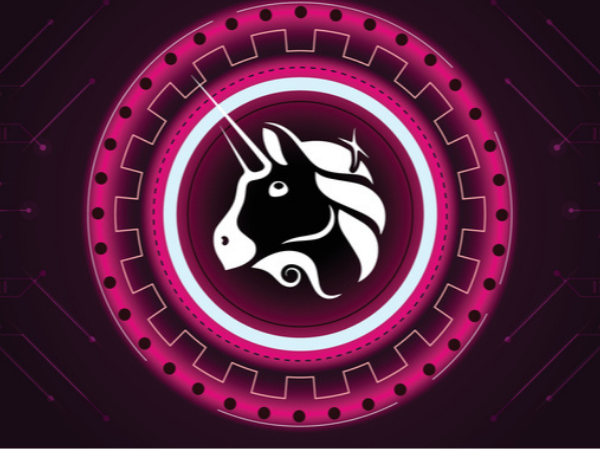Should you consider yield farming for passive income?
If you’ve been following the cryptocurrency trend, you might have heard of yield farming. It lets people earn more cryptos but without the hassle of mining. Still, this method poses many risks, especially if you don’t know what you’re doing.
We’ll start by talking about the details of yield farming, specifically how it works. Then, we will explore its potential upsides and downsides. We will also compare it to staking and see how else you can profit from crypto.
First, we had mining, then staking, and now we have yield farming. Many people promise these to be great ways to earn passive income from cryptocurrency. Yet, you must be careful of their potential risks or lose a lot of money.
What is yield farming?

Have you ever used a crypto exchange platform? As the name suggests, it’s made up of two cryptos. You can choose from various trading pairs. Examples include BTC/USDT and DOT/ETH.
The crypto platform needs to have a ready supply of these coins at all times. When you buy or sell, it has to give you a corresponding amount of a specific coin.
Where does it get the supply? It comes from a liquidity pool or LP. Decentralized exchanges (DEXs) allow people to deposit cryptos in them. In return, the investors get more of that crypto.
This is the gist of how yield farming works. You provide amounts of at least two cryptos to facilitate exchanges. Let’s take yield farming in Uniswap (UNI) as an example.
It’s a decentralized finance (DeFi) protocol on the Ethereum blockchain. Uniswap also has a native token called UNI. It’s an ERC-20 token, just like Ethers (ETH).
Uniswap lets people swap other ERC-20 tokens. It also has a liquidity pool. If you want to participate in yield farming, you’ll have to provide equal amounts of ETH and UNI coins.
How does it work?
Let’s say you’ve deposited coins for yield farming in Uniswap. How will this DEX make use of your funds? It will handle your money using smart contracts.
In case you don’t know, smart contracts are agreements that execute on their own. This means they don’t need a third party to work. Instead, it will execute once specific conditions are met.
The Uniswap platform uses an automated market maker (AMM). The AMM will use your coins to plug them. This prevents slippage, a delay for buy orders when there aren’t enough sellers.
In return, you earn more coins. This will depend on certain factors, though. Examples include market conditions and the terms followed by the lending and borrowing protocols.
Various DeFi platforms let you take part in yield farming. Again, check their liquidity protocols before joining. The following are just some of the popular platforms for yield farming:
- Aave
- Balancer
- Compound
- Curve Finance
- Uniswap
- Instadapp
- SushiSwap
- PancakeSwap
If you know about crypto mining, you might have noticed huge differences with yield farming. Mining is much more expensive than the latter.
You’ll need a powerful computer that can confirm transactions on a specific blockchain. Not only that, it has to be faster than the other mining rigs. Otherwise, you don’t earn.
On the other hand, you only need to deposit funds to start yield farming. This feature makes it similar to staking, another way to earn passive income from crypto.
What is the difference between yield farming and staking?
You could earn more cryptos from staking and yield farming. They also require people to deposit funds. How do you tell them apart, though? It all boils down to their purpose.
Staking helps in running a certain crypto network. You’ll need to set up a node when staking. As a node, you’re in charge of verifying transactions, just like in the bitcoin network.
Nowadays, you may not even need to set up a node! Just deposit some coins, and wait for the returns! This makes staking work like a savings account at your local bank.
On the other hand, yield farming helps a crypto exchange. As we said, your deposit supplies it with liquidity. Whenever someone wants to buy or sell cryptos, they will use your funds.
Why do some people like yield farming?
The potential gains are another thing that sets them apart from each other. They both beat traditional finance methods of passive income. Yet, yield farming gives even higher returns!
This is why DeFi projects became popular lately. If you follow crypto trends, you might have seen DeFi applications promoted on social media.
They often use yield farming to raise funds. Do you want to see just how effective this is? Let’s look at Yearn Finance or yEarn as an example. Andre Cronje launched it just this year!
When you deposit tokens into yEarn, its lending protocols turn them into yTokens. If you placed USDC in there, it becomes yUSDC. Cronje also launched its YFI Token this July.
He intended it as a way of boosting Yearn Finance’s user base. In July, the price of YFI was roughly $3,000. Now, it’s a whopping $39,996.93! Keep in mind that it just launched last month!
If you’re one of the early holders, you’re probably enjoying the high yields right now. Imagine how lucrative the other DeFi applications must be!
What are some risks when yield farming?
Yield farming isn’t magic. It comes with a lot of potential risks. If you’re not careful, you could quickly say goodbye to your investment. Read more about these issues below:
- Smart contract problems – Yield farming relies on decentralized protocols. These run on smart contracts with conditions set by another person. If that person didn’t write the code properly, someone might take advantage of it. A hacker may use that hole to extract all the funds in the liquidity pool.
- Poor response to market changes – The smart contracts of your yield farm should also adjust to market conditions properly. Otherwise, you may incur losses.
- You may have to spend too much – Let’s take Josh Rager’s experience with Uniswap. He’s the founder of crypto trading service Blockroots. He took to Twitter and complained about the gas fee worth $1,292! You may have a similar issue with other yield farming platforms.
Here’s another big reason why it’s risky: it’s complicated! You need advanced knowledge before becoming a yield farmer. Here are just a few things you need to know:
- Cryptocurrency – You have to be more knowledgeable than the average crypto investor. This means knowing how your crypto works.
- Other blockchains – We mentioned that Uniswap runs on the Ethereum network. If you want to be a Uniswap yield farmer, you have to understand how Ethereum works too.
- Crypto market – Your strategy should be beyond “buy low, sell high.” Learn how that crypto coin behaved in the past. If you can’t, you’ll have to rely on market indicators. If you can’t do these, you’ll probably enter the yield farming scene at a bad time.
- Protocol terms – You’ll have to rely on smart contracts when yield farming. It would be best to understand how its terms work. This includes the interest rate and withdrawal conditions. These are different across platforms, though.
Final thoughts
With high returns come high risks. This is a nifty rule of thumb for most investments, not just cryptocurrency. As an investor, you should be clear on how much risk you can handle.
If you’re not keen on risk, you may try safer methods like staking. These may help you get huge returns too! Also, there’s the old reliable method of HODLing cryptos.
It’s just that you may have to wait a bit. If you have time, why not read more crypto articles from Inquirer USA? They could help you start your investment journey!
Learn more about yield farming
How does yield farming work?
You deposit certain cryptos into a liquidity pool. In exchange, you earn more of the coins you placed inside. However, various factors may affect your earnings.
Is yield farming profitable?
You could make a lot of money from yield farming. This means more risk, though. The right project could skyrocket your earnings. The wrong one could wipe your funds almost instantly!
Is yield farming the same as staking?
Yield farming helps in running a crypto exchange platform. Meanwhile, staking helps a crypto network function smoothly. Still, they’re both ways of earning passive income with crypto.
Disclaimer: This article is not the official guide to yield farming but is based on the author’s research or own personal experience.
Sponsored Advertising Content:
Advertorial or Sponsorship User published Content does not represent the views of the Company or any individual associated with the Company, and we do not control this Content. In no event shall you represent or suggest, directly or indirectly, the Company's endorsement of user published Content.
The company does not vouch for the accuracy or credibility of any user published Content on our Website and does not take any responsibility or assume any liability for any actions you may take as a result of reading user published Content on our Website.
Through your use of the Website and Services, you may be exposed to Content that you may find offensive, objectionable, harmful, inaccurate, or deceptive.
By using our Website, you assume all associated risks.This Website contains hyperlinks to other websites controlled by third parties. These links are provided solely as a convenience to you and do not imply endorsement by the Company of, or any affiliation with, or endorsement by, the owner of the linked website.
Company is not responsible for the contents or use of any linked website, or any consequence of making the link.
This content is provided by New Start Advantage LLC through a licensed media partnership with Inquirer.net. Inquirer.net does not endorse or verify partner content. All information is for educational purposes only and does not constitute financial advice. Offers and terms may change without notice.




